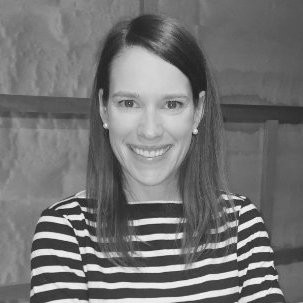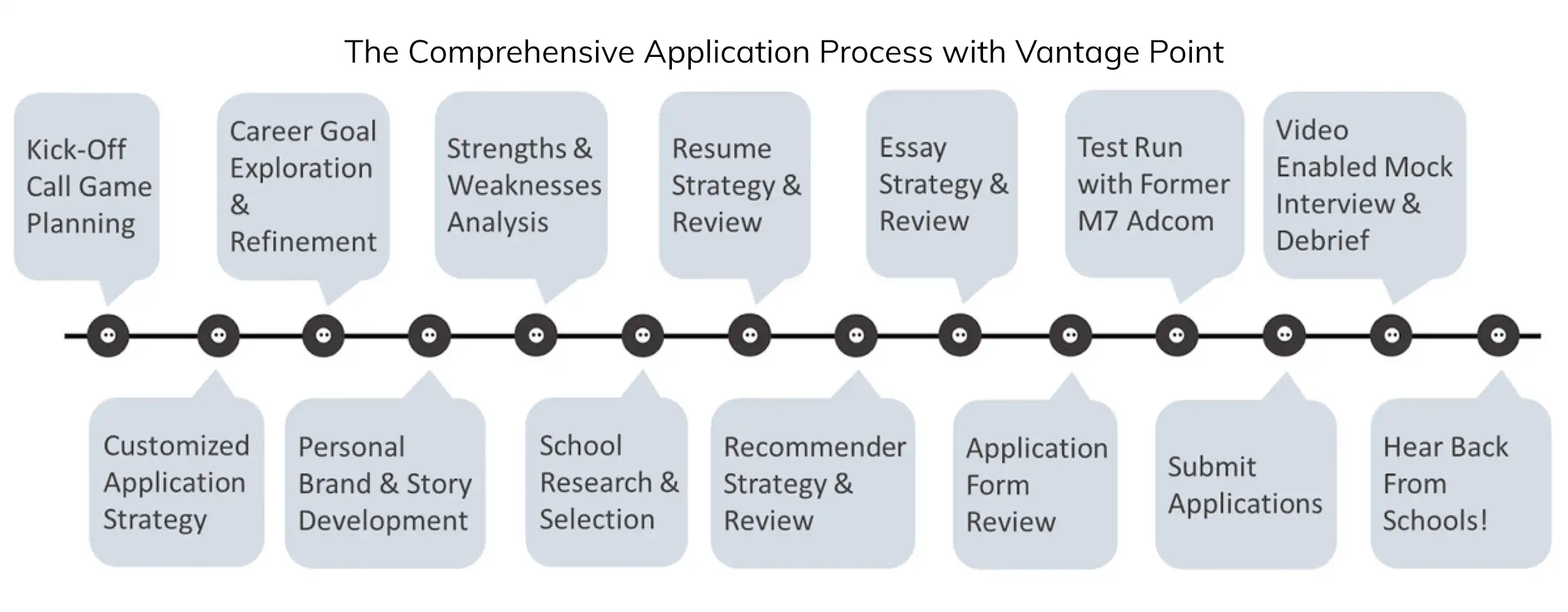The Real Cost of an MBA from a Top Program

When applying to business school, it’s easy to focus on perfecting your application—acing the GMAT or GRE, writing compelling essays, and crafting a standout story. If you’re early in the MBA application process, this guide will help you prioritize your time.
But there’s another piece of the puzzle that’s just as important to think through early on: the actual cost of an MBA.
While tuition is a well-known expense, the real cost of an MBA goes far beyond what’s listed on a school’s website. From social events and travel to hidden recruiting expenses, many students find themselves spending far more than they anticipated. Understanding these additional costs upfront can help you plan your finances more effectively and avoid unwelcome surprises.
Need additional guidance on how to approach your MBA journey strategically? Request an initial consultation.
Once you’ve laid the groundwork for a strong application, it’s equally important to understand the investment you’re about to make—not just in terms of tuition, but in the full experience. To get a true picture of what an MBA really costs, we went straight to the source: a current Stanford GSB student, Andrew*. Through his firsthand insights, we break down the unexpected expenses that add up fast—so you can budget smarter and make the most of your MBA experience.
Andrew, take it away!
The Sticker Price vs. The True Cost of an MBA
Stanford GSB lists the cost of attendance for the 2024–2025 academic year at $130,746 for a single student—a staggering number, especially considering it only covers the first year. It’s worth knowing that scholarships can sometimes be negotiated, which can take a bit of the pressure off. That said, my experience suggests that number is actually an underestimate. Sure, the official breakdown includes tuition, housing, food, books, and personal expenses.
To the school’s credit, many of these estimates have been fairly accurate. My rent comes in around $20,000 for the 9-month academic year, and the health insurance/medical fees are standard across all students. I do think the “living expenses” estimate is a bit low—which I’ll get into more below—but to be fair, many of these costs are discretionary and vary student to student. Still, there are a host of hidden costs that aren’t reflected in the school’s budget—and they add up fast.
Personally, my credit card bill has nearly tripled since starting business school. Here’s why.
How Social Life Impacts the MBA Cost
One of the largest, most unexpected expenses for me has been travel. I came in expecting to do some, but I didn’t fully appreciate just how many trips would happen. Even before classes began, my classmates organized multiple pre-MBA adventures—Yacht Week, Colombia, Lake Tahoe, and more. The ballpark cost for those pre-MBA trips alone? Around $10,000.
Since school started, the travel opportunities haven’t slowed down. Nearly every weekend, someone’s headed off to Napa, LA, or a ski trip to Tahoe. Then there are the international treks—some GSB-led, others organized by classmates. These experiences are genuinely incredible and a huge part of forming lifelong friendships. But they’re definitely not cheap—especially if you’re participating in multiple trips each quarter.
I don’t mean to suggest these experiences aren’t worth it. Quite the opposite: they’ve been some of the most meaningful parts of my time here. But I was surprised by how quickly the costs added up. Personally, I’d place myself in the second quartile (25–50%) of travelers in the class. During fall quarter, I didn’t take a single trip. I was still adjusting to the whirlwind of business school and found plenty to do on campus. But over winter break, I spent nearly three weeks in South America with a group of classmates—and it was a blast. Spending extended time with the same group, without other competing priorities, helped us build deeper connections. After that, I committed to at least one weekend trip per month in winter and spring.
These trips can vary significantly in price. A ski weekend can run $1,500–2,000, while something more local—like a road trip with friends and a shared Airbnb—can cost closer to $300–500.
Outside of travel, I seriously underestimated how much I’d spend on dining out. Meals are a central way people connect in business school, and at Stanford, it’s constant—lunches, dinners, late-night snacks. Especially in the Bay Area, this adds up fast. Personally, I spend around $1,500 a month on food, which feels pretty average.
The Other Hidden Costs No One Tells You About
Beyond travel and food, there’s an entire category of career and recruiting costs that sneak up on you. If you’re recruiting for industries like consulting, finance, or tech, you’ll likely spend on flights, hotels, and Ubers for interviews, coffee chats, and networking treks—whether that’s in New York, San Francisco, or even abroad. You’ll also need professional clothing—suits, shoes, bags—and will probably be visiting the dry cleaner more than you expected. Then there are industry conferences and competitions, which often require registration fees and travel.
Social life has its own set of expenses: membership dues for professional and social clubs (often $50–300 each), bar nights, tailgates, galas, formal events, Secret Santa gifts, birthday dinners, and section or class trips (Vegas weekends, ski houses, global excursions). Even the basics—like buying a new laptop, iPad, or phone, or covering moving costs—can hit your wallet hard.
Bringing the Full MBA Cost Into Focus
If we go back to the official cost of attendance, most schools budget around $2,000 per month—or $19,000 annually—for living expenses outside of rent. In my experience, a more realistic number is closer to $30,000–35,000, if not more. I originally expected to spend less than the posted sticker price and was surprised to find myself spending more.
Individually, none of these costs seem overwhelming—but together, they significantly inflate the total cost of your MBA. Having a rough idea of these categories upfront can help you budget more realistically and feel more in control.
What I Wish I Had Known
I wouldn’t trade this experience for anything. The MBA is about so much more than just academics—it’s about relationships, growth, and once-in-a-lifetime opportunities. That said, I wish I’d come in more financially prepared.
If I could go back, I would’ve built a more realistic budget with a dedicated “experiential spending” category for travel, dining out, and social events. I would’ve also spoken to current students sooner to understand their actual monthly spending, rather than relying solely on the school’s estimates. Even something as simple as tracking my expenses from day one would’ve helped me stay more mindful. This also ties into how much loan you might want to take—and how aggressive or conservative to be in the year or so leading up to business school.
An MBA is a huge investment in yourself—academically, professionally, and socially. Just make sure you understand the real cost of an MBA before you dive in.
Cost-Saving Tips
That said, there are definitely ways to make the MBA experience more financially manageable.
Traveling more locally—road trips around California or weekend getaways within driving distance—can be just as memorable (and significantly cheaper) than international flights. Using credit card points strategically and booking trips early can also make a big difference.
On the day-to-day front, cooking at home—even a few times a week—can save hundreds of dollars. I’ve started occasionally bringing my own lunch to 1:1s at the on-campus cafes. Some students set up group meal preps or dinner rotations to make it more social and sustainable.
Other small cost-saving strategies:
- Splitting costs on rideshares, bulk groceries, or subscriptions (like Walmart+ or Whole Foods delivery)
- Taking on part-time work—like joining a startup, freelancing, or TA’ing a class
- Taking advantage of student discounts, free campus events (especially ones with food!), and school-subsidized programming
And remember: not every amazing memory has to come with a price tag.
Business school will stretch you in many ways—but with a little planning and creativity, your wallet doesn’t have to be one of them.
*Our source’s real name was changed to protect his privacy.
Ready to Take the Next Step?
We’re here to help you navigate every aspect of the process—from your application strategy to planning for the cost of an MBA—so you can move forward with clarity and confidence. Request an initial consultation to get personalized advice for your MBA journey.





Pingback: 7 Signs You Are Ready to Apply to MBA Programs this Year
June 12, 2025 7:40 pm